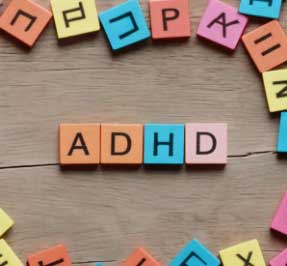 Eye Movement Desensitization and Reprocessing Therapy is recognized as an effective treatment method for PTSD and other forms of painful memories and associations by the American Psychiatric Society and the Department of Defense. EMDR’s efficacy has been studied extensively, and more than twenty randomized studies have shown it to be effective in the treatment of Post-Traumatic Stress Disorder.
Eye Movement Desensitization and Reprocessing Therapy is recognized as an effective treatment method for PTSD and other forms of painful memories and associations by the American Psychiatric Society and the Department of Defense. EMDR’s efficacy has been studied extensively, and more than twenty randomized studies have shown it to be effective in the treatment of Post-Traumatic Stress Disorder.
The 8 Phase Approach
EMDR uses an eight phase approach to treatment, with specific goals and methodologies used during each phase. The time it takes to move through these phases can vary considerably from person to person. These are the phases you can expect if you choose to use EMDR:
- Phase 1 – History taking, identifying past trauma, current situations that trigger feelings of trauma or dysfunctional emotions, beliefs, and physical sensations. Identifying positive feelings and beliefs the client would like to develop, and putting together a treatment plan.
- Phase 2 – The therapist makes sure the client has adequate coping skills and methods of handling distress during and in between sessions, and assesses the client’s stability. If these skills need to be strengthened, or if the client is not relatively stable, therapy will focus on these issues before moving into phase 3.
- Phases 3-6 – During these phases a trauma target to focus on is identified and processed using eye movement desensitization and reprocessing procedures. This involves the client recalling the most vivid visual image they associate with the trauma, as well has negative beliefs about the self, and related emotions and body sensations. They also identify the preferred positive belief. The validity of the positive belief, as well as negative emotions, are rated. The client is instructed to focus on the image, negative thoughts, emotions, and body sensations, while also moving the eyes back and forth to track the therapist’s fingers as they move across their field of vision for twenty to thirty seconds or more. The process is repeated numerous times throughout the session.
- Phase 7 – This phase is about closure. The client is instructed to keep a journal throughout the week to track thoughts, emotions, insights, and changes experienced.
- Phase 8 – Re-evaluation of the work done up to this point and the progress that has been made.
EMDR is a safe and effective form of trauma recovery when undertaken with a trained and skillful practitioner. If you currently suffer from negative thoughts, emotions, and self-image due to a past trauma, there is hope. You can heal your life and reclaim the power you lost due to painful events. Whether you were the victim of childhood abuse, experienced the loss of abilities through a car accident, or endured an emotionally unhealthy relationship, you are not only capable of moving into a healthier and happier way of living, you deserve it!
Devon is a Licensed Mental Health/Substance Abuse Counselor who is also trained in the use of EMDR within her practice. She is also a Personal Life Coach, Certified Personal Trainer, and a nationally certified teacher. She is committed to helping young people be their highest selves in all areas: body, mind, and spirit. Her expertise, enthusiasm, energy and educational background serve to create a unique blend of services and techniques employed to help you reach your goals. For counseling sessions, coaching, or training, please contact her at 505.469.0779 or he***************@***il.com.



